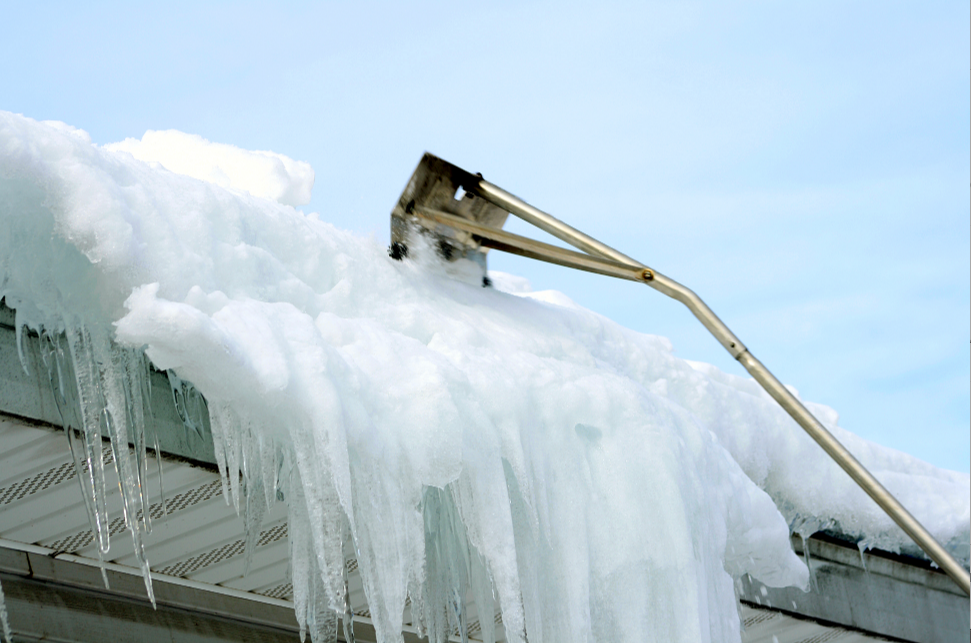
Most homeowners who live in snow-prone areas of the country take pains to clear off their driveways, walkways, and entry area during the winter. Yet, it is easy, when your focus is turned toward the snow on the ground, to forget about the snow on your rooftop. Leaks, roof collapse, ice damming, and more can result from too much snow and ice staying too long on your roof.
The threat of costly repairs and significant safety hazards will sometimes require removing excess snow from your roof. To that end, here are 8 tips on how to safely handle the rooftop snow removal process:
1. Be Aware of the Weather
Dress warmly in layers and with hat, gloves, and slip-proof boots before attempting to remove snow from your roof. Hypothermia, frost bite, and cardiac arrest during heavy lifting in freezing temperatures is not at all uncommon. Also be aware of the forecasts to avoid an exercise in futility or an emergency situation where old and new snow deposits combine to overwhelm your roof.
2. Be Aware of Your Roof Condition
Go over the blueprint of your roof, or do a visual inspection if possible, to ensure you are familiar with the structure of your roof. Have a picture of the valleys, hip joints, gables, rakes, and peaks in your mind. Be aware of where the vents, skylights, and gutter are located. Also, find out the load-bearing capacity of your roof and compare it to the present snow-load. One cubic foot of snow weighs about 15 pounds (16.02 kg/m3). Saturated snow, however, weighs as much as 20 pounds per cubic foot (320.37 kg/m3).
3. Stay at Ground Level if Possible
In many cases, you can clear away enough snow from ground level using a roof rake (pictured above) or from off a ladder. If you don't step foot on the roof, your odds of injury are much lower, and you can often minimize the need for shoveling by applying deicer along the eave.
4. Don't Let Snow Pile Too High
If you have the option of removing four inches (10.16 cm) of snow instead of waiting until 18 inches (45.72 cm) have piled up, so much the better. As layer after layer accumulates, you may end up with ice layers under snow layers, which will make snow-removal extremely hazardous.
5. Lift With Good Posture
Lifting snow can strain your back muscles and give you aches and cramps, but using your legs more than your back to lift with will help prevent this. Proper lifting is as important with snow as with heavy boxes or machinery.
6. Don't Remove All the Snow
According to FEMA, it is advisable to leave two inches (5 cm) of snow on your roof since trying to get it all off often leads to damaged roofs and slip-and-fall accidents. In fact, it is best to not remove the snow at all if possible- but sometimes, there is no other option.
7. Use a Plastic Shovel
Metal shovels, ice picks, mechanical equipment, and other sharp objects should never be used to take snow off your roof. The risk of roof-damage is simply too great, and leaks may result.
8. Remove Snow in Sequence
It is generally best to remove heavy drifts first to balance out the load, but for gabled roofs, you should begin at the ridge and work toward the eaves for best results. Snow should never be "stockpiled" on the roof temporarily.
Winter brings many challenges to homeowners, including to their roofs. It is best to avoid rooftop snow removal, but when it must be done, it is imperative that it be done in a safe, efficient manner.


